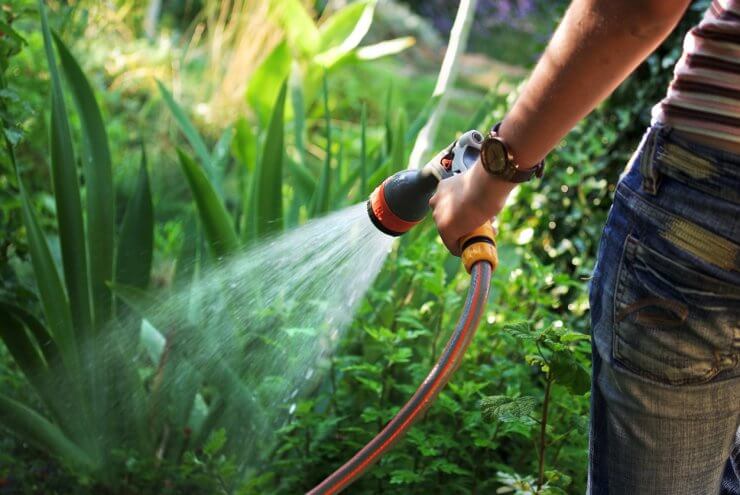
When it comes to watering your vegetable garden, you have a few different choices to make. You can create drip irrigation systems, place soaker hoses in your garden, and even break out the ol’ watering can. For many gardeners, hose watering is a primary or secondary method of watering their vegetable gardens. Hose watering is by far, the easiest way to get your garden watered right off the bat.
Spoiler alert: hose watering is not really rocket science. Grab the hose, turn on the spigot, and water your vegetables. But like many simple tasks in this world (I’m thinking of the toast I burned this morning) there are still ways to mess it up! Here are five hose watering mistakes people make in their vegetable gardens and how to avoid them.
Discover 7 top tips for growing, harvesting, and enjoying tomatoes from your home garden—when you access the FREE guide The Best Way to Grow Tomatoes, right now!
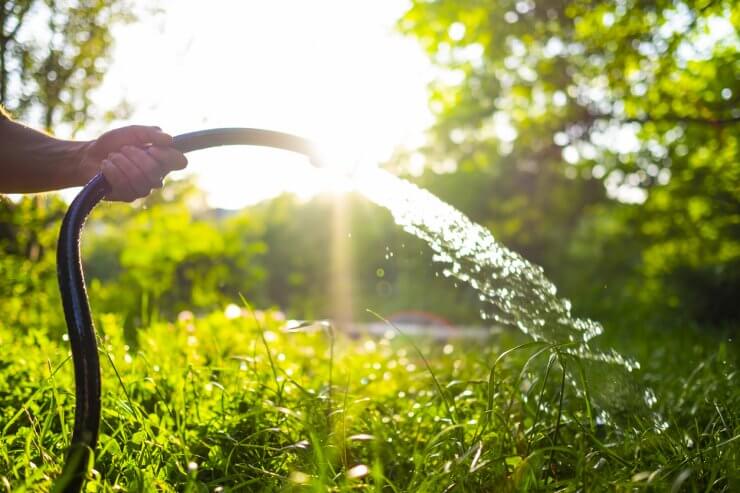
Mistake 1: Watering at the wrong time of day
If you haven’t hooked up your automatic sprinklers or another automatic irrigation method, you’ll need to rely on hose watering to deliver daily water needs to your vegetable garden. Timing is everything when it comes to hose watering and early morning is always best. By watering in the morning, you are allowing time for water to penetrate to the root of your vegetables and herbs before the strongest sun of the day. If you wait until mid-day, the sun and warm temperatures will evaporate a good portion of the water you dispense. Later afternoon is second best if you can’t make early mornings work because there’s still time for water to seep into your garden before nightfall. Evening watering should be avoided since temperatures drop and moisture won’t evaporate at all, leading to soggy garden beds and containers. This creates ideal conditions for fungus and other pathogens.
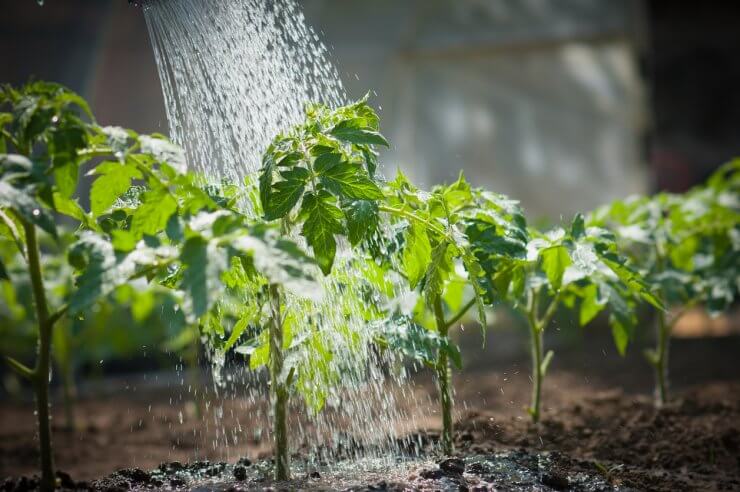
Mistake 2: Watering on top of the plants
When hose watering, it’s easy to think that by spraying the tops of your vegetable garden plants that you’re sufficiently watering them. But really, it’s a bad idea. Hose watering on the tops of your plants can be wasteful since plants can only take in so much moisture through their leaves. It’s better to water at the base of plants, where water can get to the vegetable roots much faster. Top-spraying can also cause the soil to splash up onto the plants. This can spread pathogens and fungal spores.
Not all crops are affected negatively by top-watering. Fall crops, for instance, can tolerate a bit more top-watering since they are accustomed to cooler and damper environments. Watering your plants from the top down isn’t the end of the world, but it’s best to avoid this hose watering method when your vegetables are fruiting.
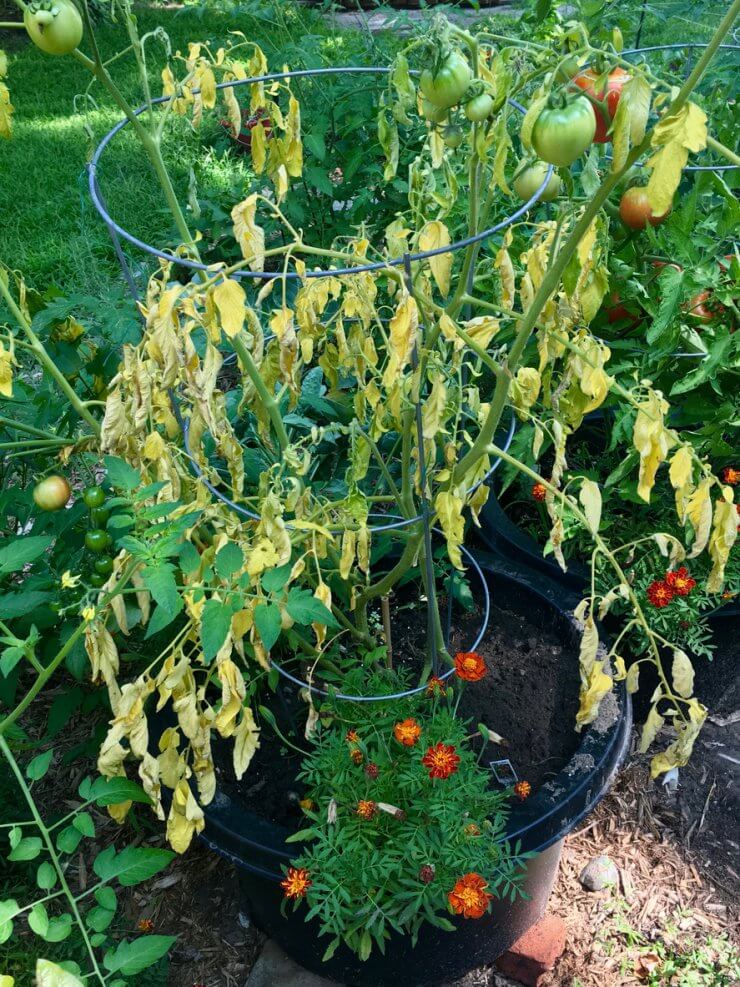
Mistake 3: Underwatering/overwatering
You may think you’ve watered your vegetables adequately, but many times the water hasn’t reached the roots of your vegetables. Potting and soil mixes that are dry to begin with, might need a “water-wait-water” method. With your first pass of the hose, coat the surface of your garden beds and containers. Then, move on to another location. Come back and check with your finger to see how deep the initial hose watering has penetrated. Another pass of water will likely seep deeper into your vegetables’ roots.
Overwatering can be a common issue with container gardening. If the container doesn’t have a drainage hole or not enough drainage holes, you can over-saturate the soil. Signs of overwatering are root-rot, leaf wilting, and yellow leaves. (Heads up, yellow leaves can also be a sign of pests or nutrient deficiencies.) Again, using the finger test will tell you how wet the soil is before you water.
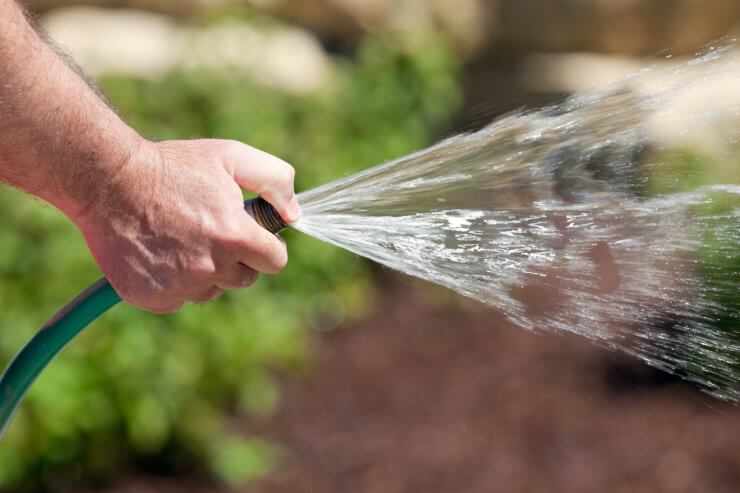
Mistake 4: Using a hose without the proper nozzle or sprayer attachment
Hose watering without any kind of nozzle or sprayer can be an inefficient way of watering your vegetable garden. For one thing, there’s no way to control the pressure or flow, unless you harness your father’s “thumb-over-the-hose” method to create an inconsistent (and very splashy) flow. But be warned: not all hose attachments are created equal. Some nozzles create far too much pressure than is good for hose watering a vegetable garden. You can easily spray too hard, causing the soil to erode and nutrients to leach from your garden beds or containers.
The trick is to find a spray nozzle that allows you to adjust the pressure and pattern of the water spray. For an even more ergonomic and efficient hose watering, I highly recommend investing in a good water wand that lets you reach farther and provides multiple spray intensity options.
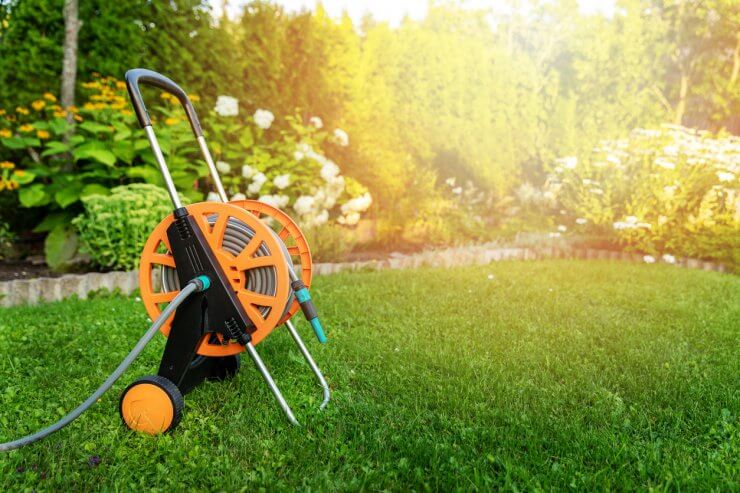
Mistake 5: Not keeping your hose organized
A sloppy hose isn’t just an eyesore, it can shorten the life of your hose. Not only that, if you are hose watering without hose guides around the perimeter of your garden beds or containers, the hose may end up crushing your vegetables and herbs.
There are many hose storage options to choose from. Store-bought organizers that are wall-mount or free-standing are pretty straightforward as long as you choose the right location for them. DIY versions can include re-purposing a wheel rim, a large hook, or even an extra-large flower pot.
In terms of hose guides, your garden stores will have plenty to choose from, but you can also go a DIY route with a bit of copper piping staked into the ground at strategic corners or curves in your garden.
What are some hose watering mistakes you’ve made over the years? What advice do you have for new gardeners? Share your thoughts in the comments! Discover 7 top tips for growing, harvesting, and enjoying tomatoes from your home garden—when you access the FREE guide The Best Way to Grow Tomatoes, right now!


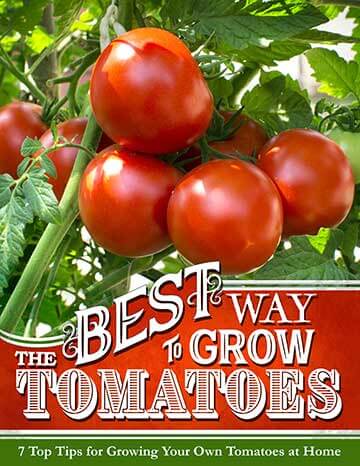


I love my expandable watering hoses. I am sure they won’t last as long as others. In the meantime, they are easier to store and easier to use.
While copper pipe driven into the ground as hose guides won’t rust it’s expensive and can poison some plants. Use PVC pipe instead. It’s much less expensive and virtually inert although it will have to be replaced every few years because it become brittle from the sun and breaks easily.
Hand watering and/or soakers can help control the splashing of soil on the leaves; but a heavy rain can negate all your efforts. I take two extra precautions. First, be sure to have protective mulch for all the obvious reasons. Second, I trim the lower leaves from tomatoes (the most vulnerable to wilt & fungus) to raise the remaining ones above the ground.